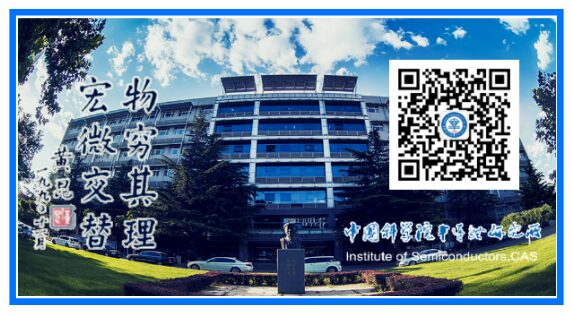Source: Wangcai Chip
Original Author: Wangcai Chip - Xiaochao

▲ General algorithms and architectures for efficient on-chip learning based on memristor storage-compute integration
What is an Integrated Memory-Compute Chip?
An integrated memory-compute chip is a new chip architecture that combines storage and computing functions. In traditional computer systems, storage and computing are separate, requiring data to be transferred from memory to the processor for computation. In contrast, the integrated memory-compute chip combines storage units (typically memory) with computing units (usually processors) on the same chip, allowing for direct data storage and computation within the chip, significantly enhancing data processing efficiency.
The architecture typically includes the following key components:
1. Compute Units: The integrated memory-compute chip houses multiple compute units that can perform various computational operations, such as matrix operations, vector operations, and logical operations. These compute units are usually equipped with high-performance processor cores to execute complex computational tasks.
2. Storage Units: The integrated memory-compute chip contains storage units, typically flash memory or other non-volatile storage media. These storage units are used to store data and intermediate results required for computation. The high-speed read/write capabilities of the storage units are crucial for the performance of the integrated memory-compute chip.
3. Internal Interconnect Network: The chip features an efficient interconnect network that connects compute units and storage units, facilitating the rapid transfer of data and the return of computation results. This internal interconnect network is typically designed for low latency and high bandwidth.
4. Computational Storage Engine: The chip often includes a computational storage engine, a hardware module dedicated to executing storage computation tasks. These tasks may involve data compression, encryption/decryption, data filtering, and querying. The computational storage engine can perform real-time computations while storing data, enhancing data processing efficiency.
5. Cache: The integrated memory-compute chip usually contains a cache for temporarily storing intermediate data during computation, reducing access frequency to the main memory and improving computational efficiency.
6. Management and Control Unit: This unit oversees the overall management and control of the chip, monitoring chip status, handling errors, managing data flow, and task scheduling to ensure the normal operation of the integrated memory-compute chip.
Advantages of this Integrated Architecture
1. Reduced Latency: Storage and computation are completed on the same chip, eliminating data transfer delays and accelerating data processing speed.
2. Energy Savings: Data transfer typically consumes a significant amount of energy; the integrated memory-compute chip reduces data transfer, lowering energy consumption.
3. Enhanced Performance: The chip achieves tighter integration of storage and computation, thereby improving overall performance.
4. Increased Data Security: The risk of data interception or tampering during transmission is minimized.
The current challenges facing integrated memory-compute chip technology include:
1. Heat Dissipation Issues: The integration of storage and computing units may lead to heat generation, necessitating solutions for thermal management challenges.
2. Process Technology: Manufacturing integrated memory-compute chips requires advanced process technologies, including three-dimensional stacking techniques, which are critical for the realization of these chips.
3. Memory Capacity and Speed: The capacity and speed of the memory must be sufficiently high to meet the demands of various application scenarios.
4. Software and Hardware Compatibility: Integrated memory-compute chips need to be compatible with existing software and hardware systems to ensure smooth transitions and upgrades.
5. Reliability and Stability: These chips must exhibit high reliability, especially in large-scale data processing and critical application fields.
Application Fields
Integrated memory-compute chips have highly integrated advantages, making them widely applicable across various fields, including but not limited to:
1. Artificial Intelligence (AI) and Machine Learning (ML): These chips can accelerate the training and inference of neural network models, improving the performance and efficiency of deep learning algorithms.
2. Big Data Analytics: In big data processing, integrated memory-compute chips can handle massive amounts of data more quickly, accelerating data analysis and mining processes.
3. Scientific Computing and Simulation: For scientific problems requiring large-scale computations, these chips can provide faster computing and data processing capabilities for simulating and analyzing complex natural phenomena.
4. Cloud Computing and Data Centers: Integrated memory-compute chips can offer more efficient cloud computing services, reducing the need for internal data transfers within data centers, thereby enhancing server performance and energy efficiency.
5. Edge Computing: These chips can be used in edge devices to accelerate local data processing, reduce reliance on network bandwidth, and improve the response speed of edge computing systems.
6. Virtual Reality (VR) and Augmented Reality (AR): Integrated memory-compute chips can provide higher graphics processing and computing capabilities, improving the performance and experience of virtual and augmented reality applications.
7. Autonomous Driving and Intelligent Transportation Systems: These chips have potential applications in processing sensor data, image recognition, and decision-making to enable smarter transportation systems and autonomous driving technologies.
8. Internet of Things (IoT): Integrated memory-compute chips can be incorporated into various IoT devices, providing local data processing and decision-making capabilities, reducing reliance on cloud services, and enhancing the intelligence of IoT systems.
These scenarios are just part of the examples of integrated memory-compute chip applications; as technology continues to evolve, its application fields will further expand and deepen.
Reprinted content only represents the author’s views
Does not represent the position of the Institute of Semiconductors, Chinese Academy of Sciences
Editor: Qian Niao
